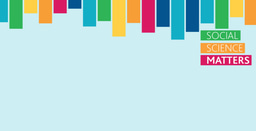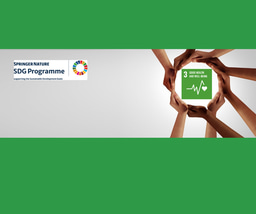Menstrual cups and IUDs - what women need to know
Published in Healthcare & Nursing, Social Sciences, and Paediatrics, Reproductive Medicine & Geriatrics

In the UK now we have a range of progestogen-only, long-acting reversible contraception (LARC) including injectables, an implant and a variety of hormonal intrauterine devices. In the past 30 years, contraception has also increasingly been recognised and utilized for a wide range of other health benefits, for example, treatment of heavy menstrual bleeding, endometriosis, polycystic ovarian syndrome, and premenstrual syndrome often in more tailored regimens. Alongside newer methods and new ways of taking existing methods, the popularity of the much older, non-hormonal method, the copper intrauterine device (IUD) is steadily increasing. This mirrors the rising trend of menstrual cup usage particularly among younger women. In our article Menstrual cup and risk of IUD expulsion – a systematic review we examine the evidence to date and highlight an important research gap which is limiting the ability of these young women to make informed choices regarding intrauterine contraception and their menstrual management.
During a COVID lock down three years ago, I was contacted by a 4th year medical student who wanted to know whether clinicians and patients were aware of any association between menstrual cups and expulsion of IUDs and was keen to explore this topic. During my clinical training I had seen experienced clinicians advising IUD users against menstrual cups and had increasingly been asked about this in clinics. I had also started proactively asking women presenting with missing threads or expulsion of IUDs about their use of menstrual cups so had anecdotal evidence of this. However the national guidance at the time did not explicitly recommend counselling regarding this risk nor avoiding using the menstrual cup with an IUD. So together we began to have our own look at the evidence.
Since the publication of our article earlier this year, the Faculty of Sexual and Reproductive Healthcare (FSRH) has published updated guidance on Intrauterine Contraception in March 2023 stating that “Evidence suggests that there could be increased risk of expulsion associated with menstrual cup use” and we think this is important to share with patients. However the guidance also highlights the lack of evidence to inform risk of intrauterine contraception expulsion associated with use of menstrual cups. In our article we call for high-quality randomised controlled trials to assess this risk and the impact of factors such as age, menstrual cup removal technique, pelvic anatomy, IUD type, menstrual cup brand and measures such as cutting the IUD strings short or delaying menstrual cup use for a time period post-insertion.
Despite enhanced contraception choices over the last 30 years, it remains important to maintain and support the safe usage of the copper IUD as the only non-hormonal, highly effective, longest-acting, reversible method and the most commonly used reversible method worldwide. Whilst there is undoubtedly work to be done to ensure that intrauterine methods are universally accessible, the extent to which menstrual management may compromise the effectiveness of intrauterine contraception should not continue to be overlooked.
Follow the Topic
-
Contraception and Reproductive Medicine

This journal is designed to promote the advancement of contraceptive technology and general reproductive medicine particularly in the areas of education, effectiveness, safety, research interest, improved or new technologies, non-contraceptive benefits, and long-term health.
Related Collections
With Collections, you can get published faster and increase your visibility.
Reviews of Contraception in Healthcare
In this collection, we welcome reviews covering a range of topics related to contraception in health care including:
• Contraceptive failure: Global Perspectives.
• Access and information regarding contraception in rural areas
• Contraceptive methods in adolescence.
• Contraception in young women.
• Contraceptive use during the menopausal transition.
• Contraceptive methods, demands and future development.
• Contraception Selection, Effectiveness, and Adverse Effects.
• Long-Acting Reversible Contraception.
• Safety and Efficacy of Intrauterine devices.
• Hormonal and natural contraceptives: on efficacy and risks of different methods for an informed choice.
• Emergency contraception.
• Postpartum contraception.
• Contraceptive use among women with medical conditions: Factors that influence method choice.
• Contraceptive options for women living with HIV.
• Contraceptive Strategies in Women with Heart Failure or With Cardiac Transplantation.
• Male contraceptive advances.
• Quality of contraceptive services.
This Collection supports and amplifies research related to SDG 3, Good Health and Well-Being.
Publishing Model: Open Access
Deadline: Jul 24, 2026





Please sign in or register for FREE
If you are a registered user on Research Communities by Springer Nature, please sign in